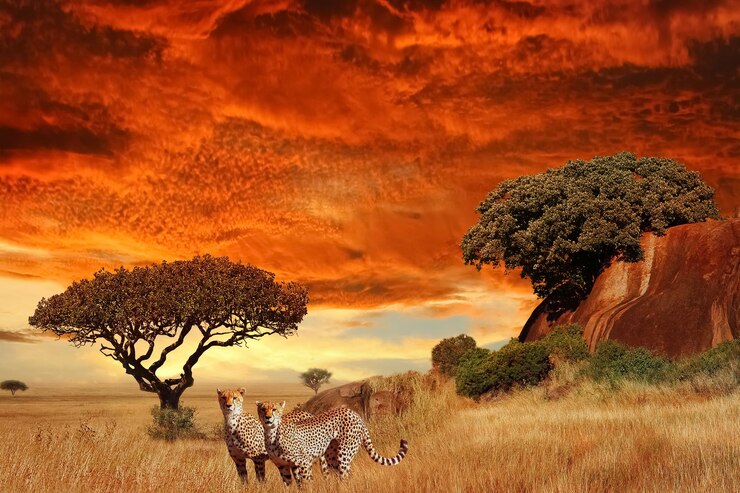Learn the essential principles of ethical wildlife photography to ensure your safari images capture nature's beauty while respecting wildlife and their habitats.
# Wildlife Photography Ethics: Responsible Safari Photography
Wildlife photography offers incredible opportunities to capture nature's most spectacular moments, but with this privilege comes great responsibility. As photographers, we must balance our desire for the perfect shot with the welfare of the animals we photograph and the preservation of their natural habitats.
## The Foundation of Ethical Wildlife Photography
### Core Principles
Ethical wildlife photography is built on several fundamental principles:
**Animal Welfare First**: The wellbeing of wildlife always takes precedence over getting a photograph
**Minimal Impact**: Leave no trace and minimize disturbance to natural behaviors
**Respect for Habitat**: Protect the environment that sustains wildlife
**Educational Value**: Use photography to promote conservation and understanding
**Honest Representation**: Present wildlife authentically without misleading manipulation
### The Photographer's Responsibility
As wildlife photographers, we serve as:
- **Ambassadors** for wildlife conservation
- **Educators** about animal behavior and ecology
- **Advocates** for habitat protection
- **Role models** for other photographers and tourists
## Understanding Animal Behavior and Stress
### Recognizing Stress Signals
Animals exhibit various signs when stressed or disturbed:
**General Stress Indicators**:
- Rapid breathing or panting
- Excessive alertness or vigilance
- Repetitive behaviors
- Attempts to flee or hide
- Aggressive posturing
- Abandoning normal activities (feeding, grooming, resting)
**Species-Specific Signs**:
**Elephants**:
- Ear flapping and head shaking
- Trunk swinging
- Mock charging
- Trumpeting or rumbling
**Big Cats**:
- Tail twitching or lashing
- Flattened ears
- Crouched posture
- Vocalizations (growling, hissing)
**Primates**:
- Teeth baring
- Hair standing on end
- Rapid movements
- Loud vocalizations
**Birds**:
- Alarm calls
- Feather ruffling
- Rapid head movements
- Abandoning nests
### Behavioral Disruption
Photography can disrupt natural behaviors:
- **Feeding**: Animals may stop eating when approached
- **Mating**: Breeding behaviors are easily disturbed
- **Parental Care**: Parents may abandon young if stressed
- **Migration**: Disruption can affect movement patterns
- **Predation**: Both hunting and anti-predator behaviors can be affected
## Distance and Approach Guidelines
### Minimum Distance Recommendations
Different species require different approach distances:
**Large Mammals**:
- Elephants: 25-30 meters minimum
- Rhinos: 30-40 meters minimum
- Hippos: 30+ meters (especially dangerous)
- Buffalo: 25-30 meters minimum
**Big Cats**:
- Lions: 20-25 meters minimum
- Leopards: 25-30 meters minimum
- Cheetahs: 20-25 meters minimum
**Primates**:
- Great apes: 7-10 meters minimum
- Monkeys: 5-10 meters depending on species
**Birds**:
- Large birds: 10-15 meters
- Small birds: 5-10 meters
- Nesting birds: Increase distances significantly
### Approach Techniques
**Gradual Approach**: Move slowly and allow animals to become accustomed to your presence
**Indirect Routes**: Avoid direct approaches which can be perceived as threatening
**Use Natural Cover**: Hide behind vegetation or rocks when possible
**Vehicle Positioning**: In safari vehicles, maintain proper distances and avoid surrounding animals
**Patience**: Wait for animals to come to you rather than pursuing them
## Equipment and Techniques for Ethical Photography
### Lens Selection
Longer lenses allow ethical photography:
- **400mm and longer**: Ideal for maintaining safe distances
- **Teleconverters**: Extend reach without getting closer
- **Quality over proximity**: Better to have a smaller image of an undisturbed animal
### Camera Settings for Distance
- **High ISO capability**: Modern cameras handle high ISO well
- **Fast autofocus**: Essential for distant subjects
- **Image stabilization**: Crucial for long lens work
- **Burst mode**: Capture sequences without prolonging disturbance
### Hide and Blind Techniques
- **Natural blinds**: Use existing vegetation or rocks
- **Vehicle blinds**: Stay in safari vehicles when possible
- **Portable hides**: Lightweight options for specific situations
- **Camouflage clothing**: Earth tones that blend with environment
## Specific Ethical Considerations
### Nesting and Breeding
**Extra Caution Required**:
- Increase minimum distances significantly
- Limit time spent near nests
- Never approach active nests directly
- Avoid flash photography near nests
- Be aware of breeding seasons and territories
**Consequences of Disturbance**:
- Nest abandonment
- Increased predation risk for eggs/young
- Reduced breeding success
- Long-term population impacts
### Feeding and Baiting
**Ethical Guidelines**:
- **Never feed wild animals** for photography
- Avoid areas where animals are artificially fed
- Don't use bait to attract predators
- Report unethical feeding practices
**Why Feeding is Harmful**:
- Creates dependency on humans
- Alters natural behavior patterns
- Increases human-wildlife conflict
- Can spread disease
- May lead to aggressive behavior
### Flash Photography
**When to Avoid Flash**:
- Nocturnal animals (can damage night vision)
- Nesting birds and mammals
- Animals showing stress signs
- In sensitive habitats
**Alternatives to Flash**:
- High ISO capabilities
- Image stabilization
- Natural lighting techniques
- Longer exposures with tripods
## Working with Guides and Drivers
### Choosing Ethical Operators
Look for guides and operators who:
- Prioritize animal welfare
- Follow park regulations strictly
- Educate about conservation
- Maintain proper distances
- Respect wildlife behavior
### Communication with Guides
- **Discuss ethics** before starting
- **Set boundaries** for approaches
- **Ask about animal behavior** and stress signs
- **Request education** about species and conservation
- **Speak up** if you see unethical practices
### Red Flags to Watch For
- Guides who get too close to animals
- Use of sounds or objects to attract animals
- Harassment of animals for better photos
- Ignoring park rules and regulations
- Lack of knowledge about animal behavior
## Post-Processing Ethics
### Honest Representation
- **Minimal manipulation**: Basic adjustments are acceptable
- **No composite images**: Don't combine multiple photos
- **Accurate captions**: Describe conditions honestly
- **Disclose significant editing**: Be transparent about major changes
### What's Acceptable
- **Exposure adjustments**
- **Color correction**
- **Cropping**
- **Noise reduction**
- **Basic sharpening**
### What to Avoid
- **Adding or removing animals**
- **Changing backgrounds dramatically**
- **Creating impossible scenarios**
- **Misleading about location or circumstances**
## Conservation Through Photography
### Using Images for Good
- **Support conservation organizations** with your images
- **Educate viewers** about wildlife and conservation
- **Promote ethical wildlife tourism**
- **Raise awareness** about threats to wildlife
- **Inspire others** to care about nature
### Sharing Responsibly
- **Include conservation messages** with your photos
- **Avoid revealing sensitive locations**
- **Credit conservation organizations**
- **Promote ethical photography practices**
- **Use platforms** that support conservation
## Legal and Regulatory Considerations
### Park Rules and Regulations
- **Research regulations** before visiting
- **Obtain necessary permits**
- **Follow vehicle restrictions**
- **Respect time limits** in sensitive areas
- **Pay required fees** to support conservation
### International Guidelines
- **CITES regulations** for endangered species
- **Local wildlife protection laws**
- **Indigenous rights** and traditional territories
- **Import/export restrictions** on wildlife images
## Teaching Others
### Leading by Example
- **Demonstrate ethical practices** in the field
- **Share knowledge** about animal behavior
- **Explain the reasoning** behind ethical guidelines
- **Encourage patience** over quick shots
- **Promote long-term thinking** about conservation
### Educating Fellow Photographers
- **Share ethical guidelines** on social media
- **Write about experiences** and lessons learned
- **Mentor new wildlife photographers**
- **Support ethical photography organizations**
- **Participate in conservation photography projects**
## Common Ethical Dilemmas
### The "Once in a Lifetime" Shot
When faced with an incredible but ethically questionable opportunity:
- **Consider long-term consequences** over immediate gratification
- **Remember your role** as a wildlife advocate
- **Think about the message** your actions send
- **Choose animal welfare** over personal gain
### Competitive Pressure
In competitive photography environments:
- **Maintain your standards** regardless of others' actions
- **Speak up** when witnessing unethical behavior
- **Support ethical competitors**
- **Judge success** by more than just the image
### Commercial Pressures
When working commercially:
- **Educate clients** about ethical practices
- **Build ethics into contracts**
- **Charge appropriately** for ethical approaches
- **Refuse unethical assignments**
## Building an Ethical Photography Practice
### Personal Code of Ethics
Develop your own ethical guidelines:
- **Write down your principles**
- **Review and update regularly**
- **Share with others**
- **Hold yourself accountable**
### Continuous Learning
- **Study animal behavior**
- **Learn from conservation biologists**
- **Attend ethical photography workshops**
- **Join conservation photography organizations**
- **Stay updated on best practices**
### Supporting Conservation
- **Donate to wildlife organizations**
- **Volunteer for conservation projects**
- **Use photography skills** for conservation causes
- **Promote sustainable tourism**
- **Advocate for wildlife protection**
## Conclusion
Ethical wildlife photography is not about limiting creativity or missing great shots – it's about ensuring that our passion for photography contributes positively to wildlife conservation and doesn't harm the subjects we love to photograph.
By following ethical guidelines, we can:
- Protect wildlife and their habitats
- Create more authentic and meaningful images
- Inspire others to care about conservation
- Ensure future generations can enjoy wildlife photography
- Build a sustainable relationship between photography and nature
Remember, the best wildlife photograph is one that captures natural behavior without causing harm or disturbance. When we prioritize ethics over the perfect shot, we become true ambassadors for the wildlife we photograph and contribute to their long-term survival.
Every time you pick up your camera in the wild, you have the opportunity to make a positive difference. Choose to be a photographer who helps protect and preserve the incredible wildlife of our planet for future generations to enjoy and photograph ethically.

